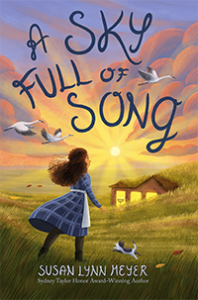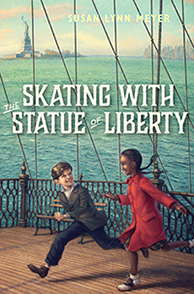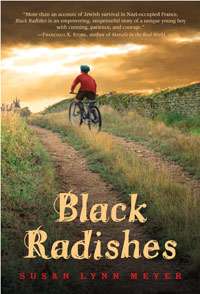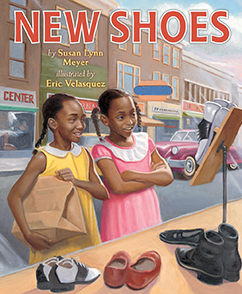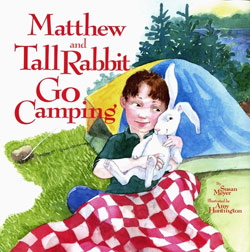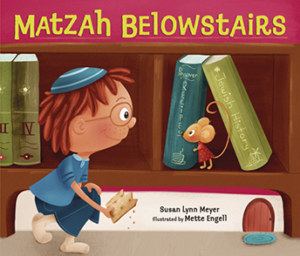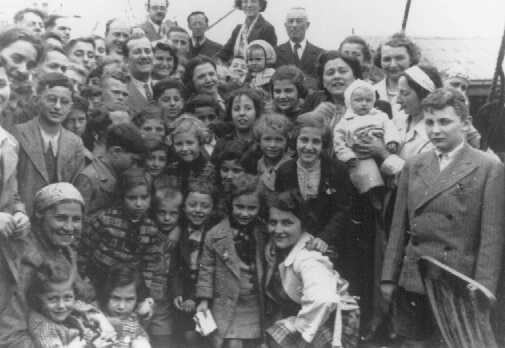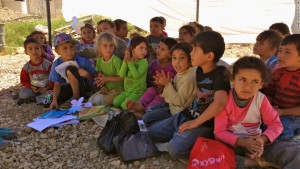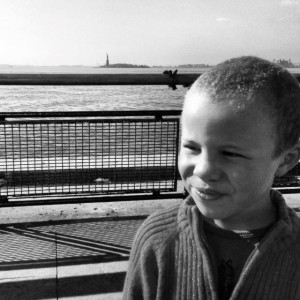For Readers of Skating With the Statue of Liberty: Immigration Restrictions During World War II
Today, we have something special: a guest post about SKATING WITH THE STATUE OF LIBERTY from a teacher from Portland, Maine! Thank you, Catherine!
IMMIGRATION RESTRICTIONS DURING WORLD WAR II
By Educator Catherine Mayrse Anderson
Anne Frank, famous the world over for the diary and legacy she left behind, was born the same year as author Susan Lynn Meyer’s father. Susan’s father, the model for Gustave in the novel Skating with the Statue of Liberty, was granted refuge in America along with his family. Anne Frank and her family were denied. How does immigration policy in America in the 1930s and 1940s continue to to have an impact on our culture?
To emigrate means to leave one’s own country to settle in another country permanently. During World War II, more than 340,000 Jews were forced by the German Nazis to emigrate from Germany and Austria. Others fled or attempted to flee from countries the Nazis invaded.
The novel Skating with the Statue of Liberty opens in January of 1942. Gustave and his family are fleeing France, which is under partial German occupation. Gustave leaves behind his best friend Marcel, who he fears has been taken by the Nazis. (To learn more about Marcel and what Gustave’s family faced in Nazi-occupied France, read Susan Lynn Meyer’s earlier novel, Black Radishes.)
Nazi propaganda claimed that the Jewish people were an “alien threat.”
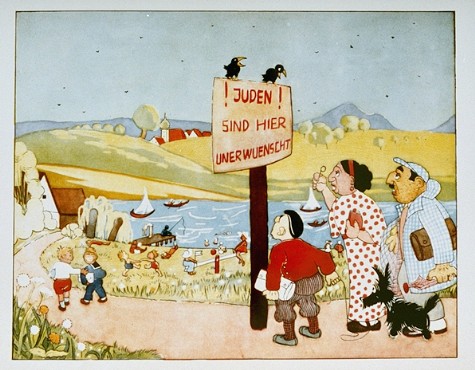
Illustration from an antisemitic children’s primer. The sign reads “Jews are not wanted here.” Germany, 1936.
They sought to remove that contrived threat by any means necessary. Jews who fled their home countries because of this severe persecution and the threat of imprisonment in internment camps (camps the world would later learn were death camps) were refugees, or people seeking safety. The United Nations defines a refugee as someone who fled his or her home and country owing to “a well-founded fear of persecution because of his/her race, religion, nationality, membership in a particular social group, or political opinion.”
Refuge is another word for safety. Are refugees always safe?
When Gustave and his family left France to live and practice their beliefs freely, they arrived in the United States as immigrants. An immigrant is someone who comes to live permanently in a foreign country. As a Jewish child, traveling to America from France during World War II, Gustave was, therefore, not just an immigrant, but also a refugee.
While a few families, like Gustave’s, were allowed into the United States, many more were denied entry. Already, by June of 1939, more than 300,000 Jewish immigrants had applied to enter this country. Most of them were not allowed in because a growing sense of xenophobia (fear of foreigners) led the United States to maintain low quotas for entering visas. The Great Depression and the scarcity jobs at home added to the growing concern that allowing displaced persons from abroad into the United States would be disastrous. The most tragic of these episodes was when more than 900 refugees fleeing Nazi Germany aboard The St. Louis were denied entry to Cuba and the United States. They were forced to return to Europe after President Roosevelt gave into exaggerated claims that Jewish refugees were potentially Nazi spies and would be putting United States citizens at risk. Many of the passengers later perished in the Holocaust.
Later, when the full extent of the Nazi regime’s crimes were acknowledged, more than 400,000 displaced persons from World War II were granted visas to enter the United States permanently between 1943 and 1945. More than 96,000 of these new Americans were Holocaust survivors.
Throughout history, people have immigrated by choice, or against their will as refugees from one country to another. What are some examples of the immigrant experience that you are familiar with in your own family history, or that you have learned about in literature or the performing arts?
Approximately 65.3 million people are displaced somewhere in the world today. 21.3 million of those people have registered as refugees. What countries are people fleeing from? Why? What are the similarities and differences between this refugee crisis and the crisis of the Jews in the 1930s-1940s?
Like Gustave, Susan Lynn Meyer’s father was a Jewish refugee from France. If Susan Lynn Meyer’s family had not been given entry into the U.S., what could have been the impact? Would you be reading and sharing the novel Skating with the Statue of Liberty? What are some of the gifts that you and your family bring to your community that we would never know about if you were not allowed to live here?
Explore More:
“Holocaust Encyclopedia: Refugees” from the United States Holocaust Memorial Museum
https://www.ushmm.org/wlc/en/article.php?ModuleId=10005139
“Teaching Resources” from the UNHCR: The UN Refugee Agency
http://www.unhcr.org/en-us/teaching-resources.html
“Teaching About the Refugee Crisis and Making a Difference” from IAmSyria.org
http://www.iamsyria.org/teaching-about-the-refugee-crisis-and-making-a-difference.html
United Nations “World Refugee Day”: learn about current refugee stories and experiences
http://www.un.org/en/events/refugeeday/
Anne Frank: Center for Mutual Respect http://annefrank.com/
Ten Myths About Immigration from Teaching Tolerance http://www.tolerance.org/immigration-myths
Meet Young Immigrants: http://teacher.scholastic.com/activities/immigration/young_immigrants/
Image References:
Image 1: Illustration from an antisemitic children’s primer. The sign reads “Jews are not wanted here.” Germany, 1936.
Source: US Holocaust Memorial Museum
https://www.ushmm.org/wlc/en/media_ph.php?ModuleId=0&MediaId=605
Image 2: Passengers aboard the St. Louis
Source: US Holocaust Memorial Museum, courtesy of Dr. Liane Reif-Lehrer
https://www.ushmm.org/wlc/en/media_ph.php?ModuleId=10005139&MediaId=1029
Image 3: Syrian refugee children in a camp in Lebanon, 2013. Source: CNN: //www.cnn.com/2013/09/08/health/gupta-child-refugees-syria-lebanon/
About the Educator:
Catherine Maryse Anderson has an extensive 15-year background as a public school literacy and humanities teacher in Portland, Maine. She spent two years as a literacy coach for Portland Public Schools and led statewide symposiums on building educator capacity for cross-cultural competency in the classroom from early childcare through college. She was a runner up for the Teaching Tolerance Educator of the Year. Catherine has been involved in ongoing performing arts projects for twenty years and is a published poet and essayist.
